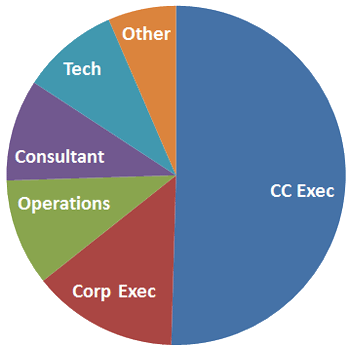Our 2018 contact center technology survey shows that some things never change, even in an era of massive change!
It had been six years since we reached out to contact center professionals to take stock of their technology views. Over the intervening years, the prevailing standards of service excellence have continued to rise. New technologies and sourcing options (like the cloud!) have continued to create opportunities (and confusion) for contact center management. And the message to do more with less (and faster) has never been louder. So it seemed an auspicious time to check in.
Two hundred and sixteen contact center professionals shared their investment drivers, decision criteria, implementation hurdles, and support concerns. They represented centers of all sizes and a diverse collection of industries. Fifteen percent of them self-identified as “Leaders of the Pack” with state-of-the-art technology. Fifty-five percent consider their technology infrastructure to be average, while 28% deemed themselves as laggards. These figures reflect a positive (albeit small) change since our last survey.
 Industries represented:
Industries represented:
- Financial Services
- Professional Services
- Consumer Products/Retail
- Healthcare
- Telecom/Cable/Internet
- Hospitality/Travel
- Government
- Insurance
- BPO/Outsourcing
- Utilities
- Manufacturing
- Other
Here are the top 5 things we learned from the survey:
Feature/function gaps, obsolescence, reliability, and growth provide the primary impetus for change. Two areas loom large: omnichannel service and workforce optimization. These investments have big implications for efficiency, sales results, customer experience, staff retention, and more. Moreover, nearly 50% of survey participants need to replace outdated technology.
While cost continues to weigh heavily in the decision process, buyers are equally concerned with filling feature/function gaps. That’s an interesting development given that cost led the pack six years ago at 82%. We take this change as a favorable indicator that senior leadership recognizes the value of getting the right solution at the right price, not just the least expensive one.
Cloud-based technology has achieved high acceptance across sizes and applications, with peak interest in performance management tools. To their credit, many cloud-based vendors have created offerings that offer parity with their premise-based counterparts, so features/functions are not stumbling blocks in the decision process. Security remains the strongest barrier to adoption by far, with 60% of participants raising their hand with that fear.
Contact centers continue to be shortchanged on implementation support while being asked to finish the job more quickly. In order to get the most out of any technology investment, centers need appropriate levels of time, talent, and money for effective project and change management. They also need sustained resources for ongoing maintenance and continuous improvement. As an industry, we need to continue to sound the clarion call for these investments and communicate clearly what’s at stake when they are shortchanged.
Most contact centers deem their technology to be sufficiently reliable, although they’ve experienced a measurable drop in responsiveness from their vendor and IT partners. Users have to push for results. They can’t rely on their vendors and IT departments to behave proactive and or provide quick response.
Unfortunately, we don’t think technology is going to get any less complicated; in fact, the opposite is true! And we don’t expect that senior management will suddenly loosen the purse strings to provide all of the resources that the center wants and needs. So the task at hand is to make the most of what is given and forge strong working relationships with IT/Telecom, vendors, and other partners.
Click here to download your copy of the contact center technology survey »
